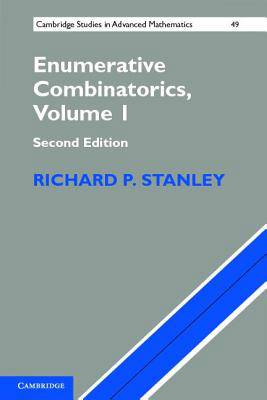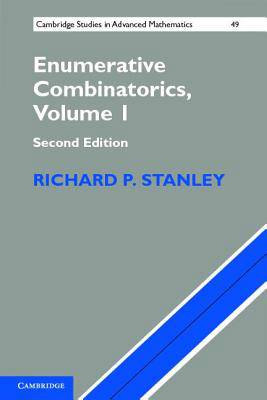
- Afhalen na 1 uur in een winkel met voorraad
- Gratis thuislevering in België vanaf € 30
- Ruim aanbod met 7 miljoen producten
- Afhalen na 1 uur in een winkel met voorraad
- Gratis thuislevering in België vanaf € 30
- Ruim aanbod met 7 miljoen producten
Zoeken
Omschrijving
Richard Stanley's two-volume basic introduction to enumerative combinatorics has become the standard guide to the topic for students and experts alike. This thoroughly revised second edition of Volume 1 includes ten new sections and more than 300 new exercises, most with solutions, reflecting numerous new developments since the publication of the first edition in 1986. The material in Volume 1 was chosen to cover those parts of enumerative combinatorics of greatest applicability and with the most important connections with other areas of mathematics. The four chapters are devoted to an introduction to enumeration (suitable for advanced undergraduates), sieve methods, partially ordered sets, and rational generating functions. Much of the material is related to generating functions, a fundamental tool in enumerative combinatorics. In this new edition, the author brings the coverage up to date and includes a wide variety of additional applications and examples, as well as updated and expanded chapter bibliographies. Many of the less difficult new exercises have no solutions so that they can more easily be assigned to students. The material on P-partitions has been rearranged and generalized; the treatment of permutation statistics has been greatly enlarged; and there are also new sections on q-analogues of permutations, hyperplane arrangements, the cd-index, promotion and evacuation, and differential posets.
Specificaties
Betrokkenen
- Auteur(s):
- Uitgeverij:
Inhoud
- Aantal bladzijden:
- 642
- Taal:
- Engels
- Reeks:
- Reeksnummer:
- nr. 49
Eigenschappen
- Productcode (EAN):
- 9781107602625
- Verschijningsdatum:
- 12/12/2011
- Uitvoering:
- Paperback
- Formaat:
- Trade paperback (VS)
- Afmetingen:
- 153 mm x 226 mm
- Gewicht:
- 848 g

Alleen bij Standaard Boekhandel
+ 213 punten op je klantenkaart van Standaard Boekhandel
Beoordelingen
We publiceren alleen reviews die voldoen aan de voorwaarden voor reviews. Bekijk onze voorwaarden voor reviews.











